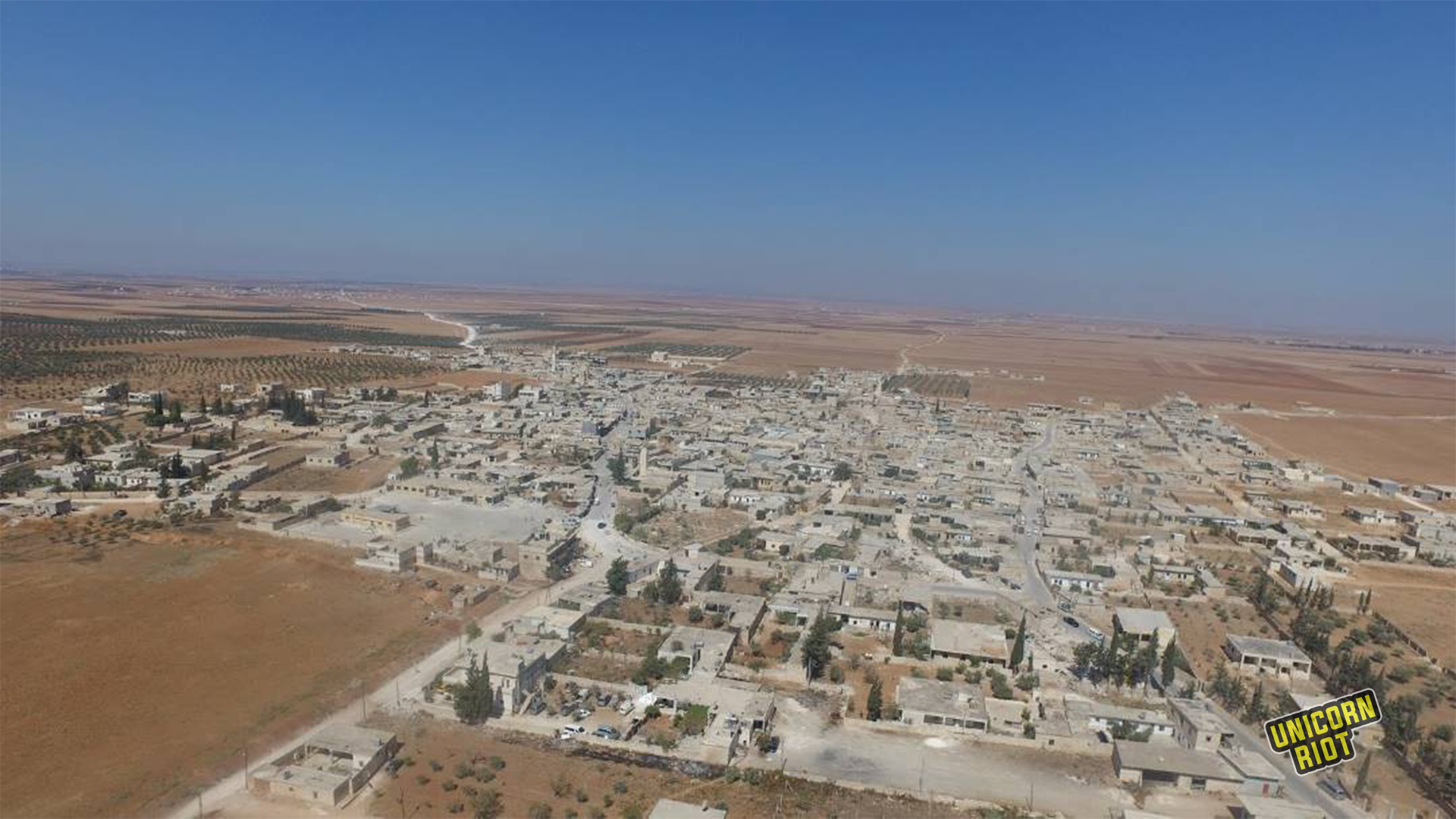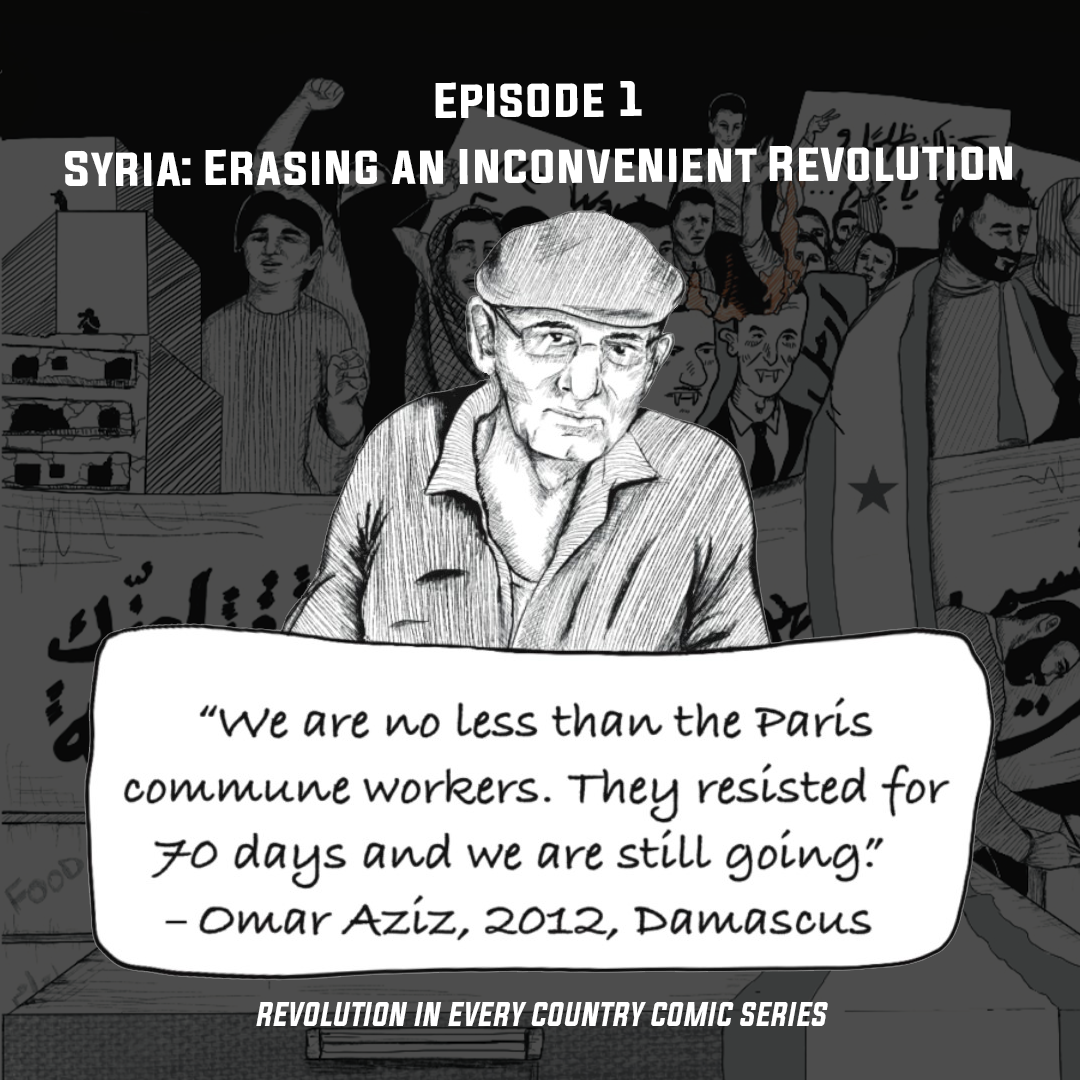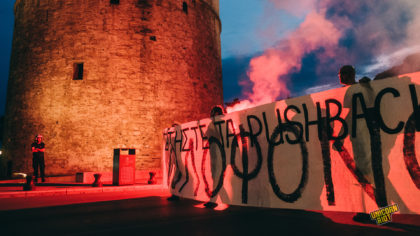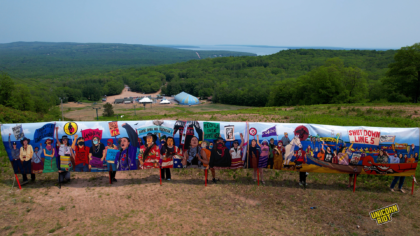Shahba, Syria: Survival as Resistance
Editors’ Note: The author of this article has written this report as a contributor for Unicorn Riot. It is based on her lived experiences as a humanitarian worker in Shahba working for the Kurdish Red Crescent.
Shahba, AANES — Shahba canton is an administrative territory of the Autonomous Administration of North and East Syria (AANES) – previously known as “Rojava” (Western Kurdistan). It contains five camps for internally displaced peoples (IDPs). Shahba and the wider Aleppo area have been the most damaged by the ongoing war, as it was the worst-hit during the clashes between warring parties. Subjected to years of bombing that weakened critical infrastructure making the living situation unbearable, the earthquake in February 2023 made it even worse.
Residents report that they have no other viable options but to stay in Shabha despite knowing it’s dangerous.
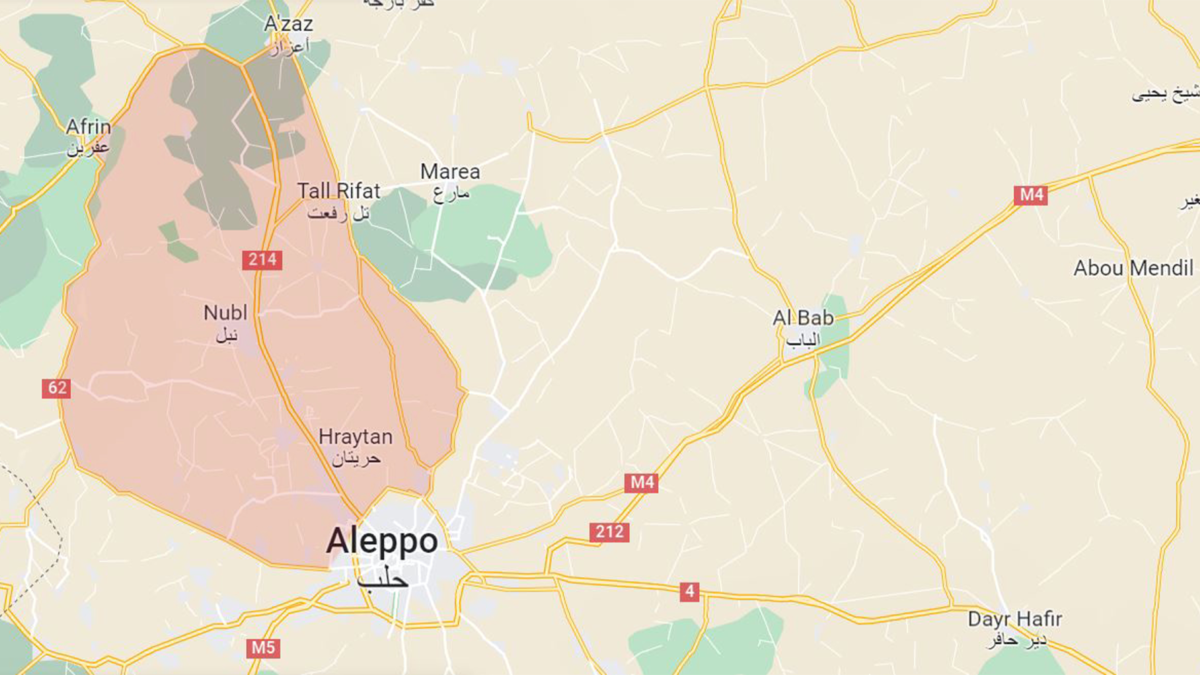
Read more about the 2023 Turkish-Syrian earthquakes
A long and harsh period started in Shahba canton when the Syrian government besieged the region in 2018. Today, many basic necessities have become scarce. The suffocating siege impacts many items, ranging from food to infant formula.
Moreover, access to medical supplies and equipment is extremely restricted in this area. Fuel is another story as the Syrian government is hindering the people of Shahba from obtaining fuel from AANES, which can only be imported through checkpoints manned by the notorious Fourth Armoured Division of the Syrian Arab Army. At these checkpoints, the Fourth Armoured Division imposes the tactic of dual prices – charging different rates for the same product.
Although residents of Shahba are supplied with generators by the AANES, their usage is severely restricted due to the ongoing siege and scarcity of fuel supplies. The general electricity grid is out of order, and there is no fuel to run the generators – power is a rare commodity. A resident of Shahba said, “We get power only [a] couple of hours throughout the [entire] day. It is horrible.”
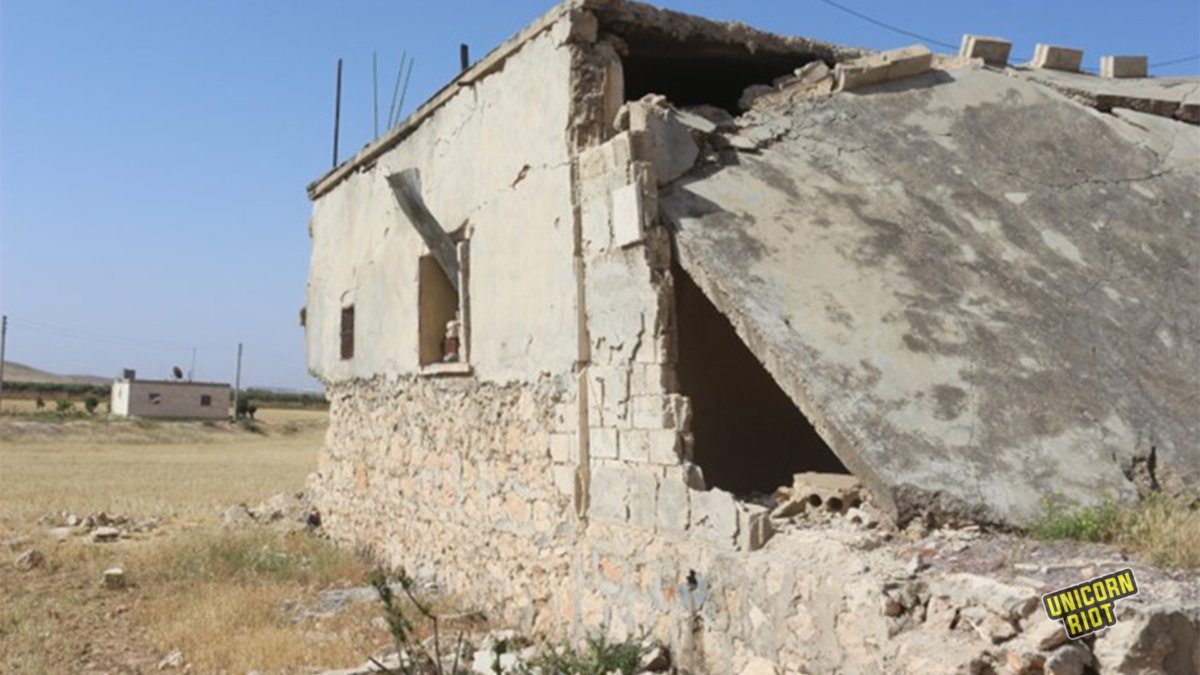
Transporting flour to the besieged area is perilous and once it arrives, it can only be purchased through the black market. Flour is imported from AANES, but in order to get into Shabha, it must cross Fourth Armoured Division checkpoints, which take very large sums of money for merely passing through it.
Concerning agriculture, Shahba’s soil is fertile. In the past, wheat, barley, chickpeas and peanuts were cultivated; the agricultural infrastructure has been destroyed in the wake of the wars that rolled over this region, leaving the area deserted. The low-quality water is unfit for irrigation, due to the relentless bombardment, canisters and gas bombs.
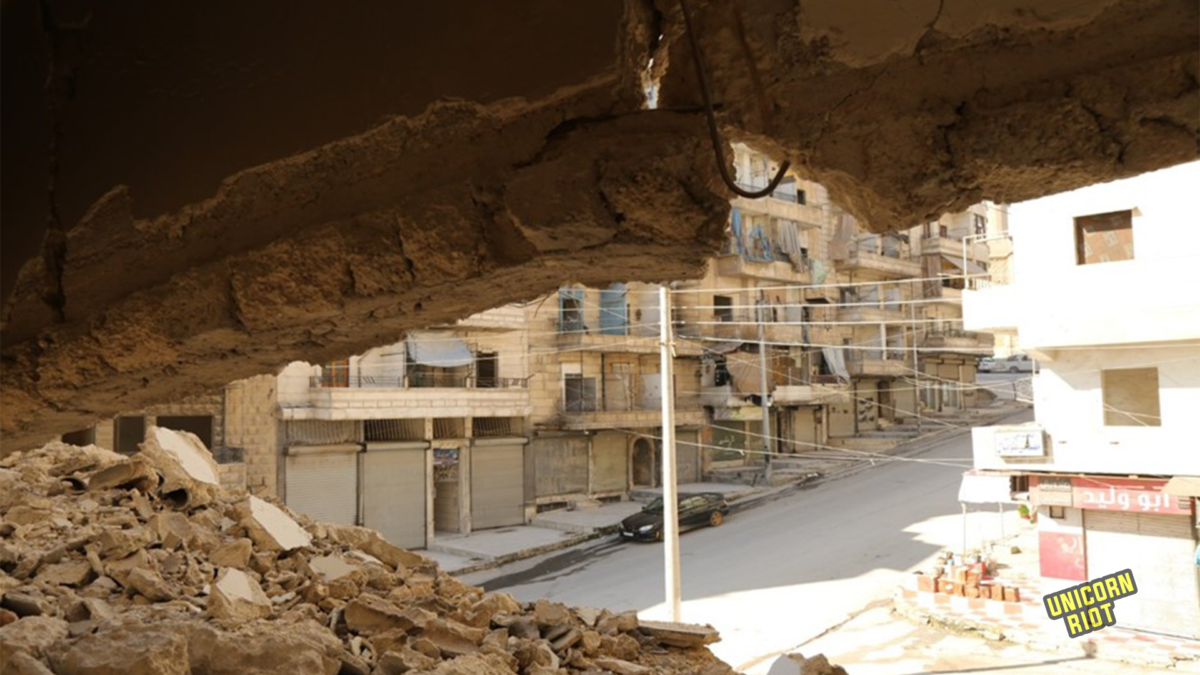
The whole region of Shahba, the camps, villages and the city are overcrowded. 95% of homes are inhabited by more than one family.
The story of overpopulation began when people were displaced from Afrin, after it was occupied by Turkey and the Turkish-backed Free Syrian Army (TFSA) in 2018. About 300,000 people from Afrin fled to Shahba. The people there received them in their tents and homes, sheltering the displaced families in spite of very little capacity.
Read more on the 2019 Turkish military operation in Afrin
Then, on February 6, 2023, a devastating earthquake hit the area in the early hours of the morning, causing further humanitarian suffering. The quake was like a curse, a catastrophe deepening the population’s agony.
Aram, a resident from Shahba who left his home in Afrin after the Turkish occupation, said “I stayed for more than a month on the street.” This is just one of many examples.
Today, many months after the earthquake, some families in the Al-Ahadath, Babnus and Tel Sha`eer villages are living in tents, fearing to return to their fractured homes, many of which were already damaged or destroyed due to the civil war.
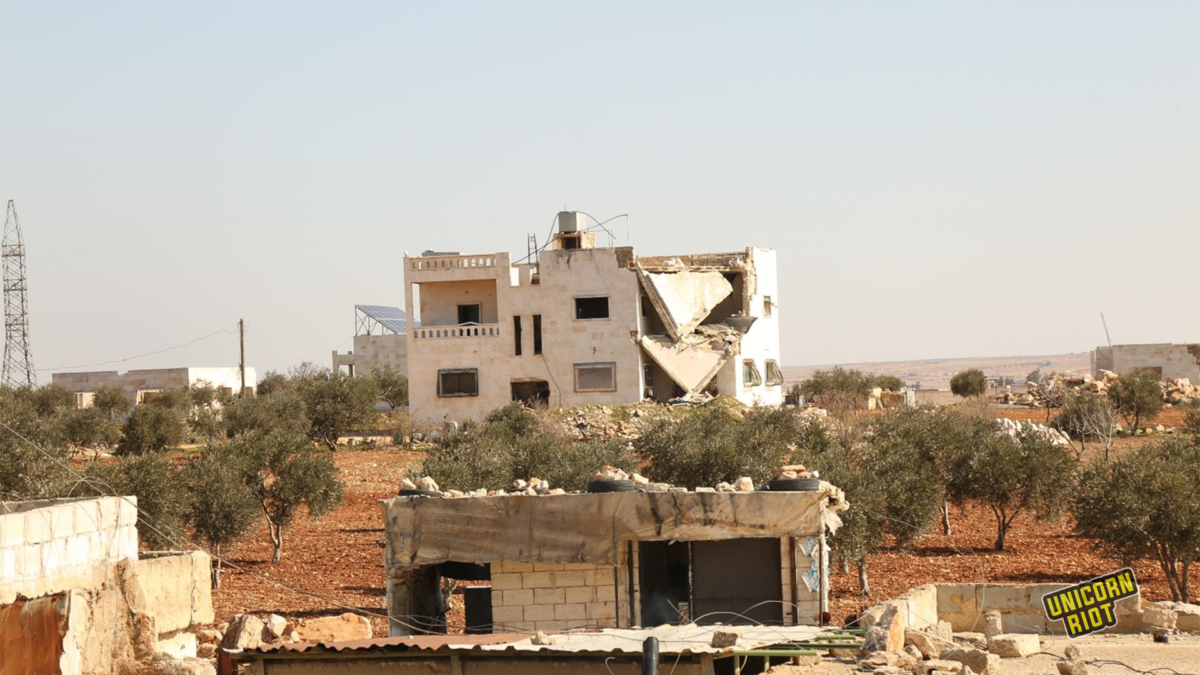
However, the tents fail to meet the needs of the people. Some locals make tents themselves with very modest tools. Committees from the AANES, which made assessment of the situation, provided the most affected people with tents, and provided some people with the necessary materials to repair their damaged houses. But these efforts were not enough to provide for everyone. Displaced people from Afrin reside in heavily damaged, virtually uninhabitable villages.
Even the United Nations International Children’s Emergency Fund (UNICEF) reduced the amount of water that was distributed in Al-Shahba, according to AANES officials. Gas cylinders are not available, and when they are, the price is exorbitant. To get a cylinder is a dream, as a local expressed.
This situation has long-lasting psychological effects, particularly on children. In early childhood they witnessed violent scenes, clashes and bombing. One local described a game children play, called “War.” There are two warring parties, some children pose as fighters, some as martyrs, some as injured.
During the most recent disaster, humanitarian aid was prevented from Shahba. The Kurdish Red Crescent, known as Heyva Sor A Kurd (HSAK), with the support of partners, was able to enter Shahba after waiting for 13 days at the border, while the government of Syria has hindered any humanitarian aid to the area. HSAK was able to provide people within 24 hours with some non-food items such as tents, blankets and sums of money.
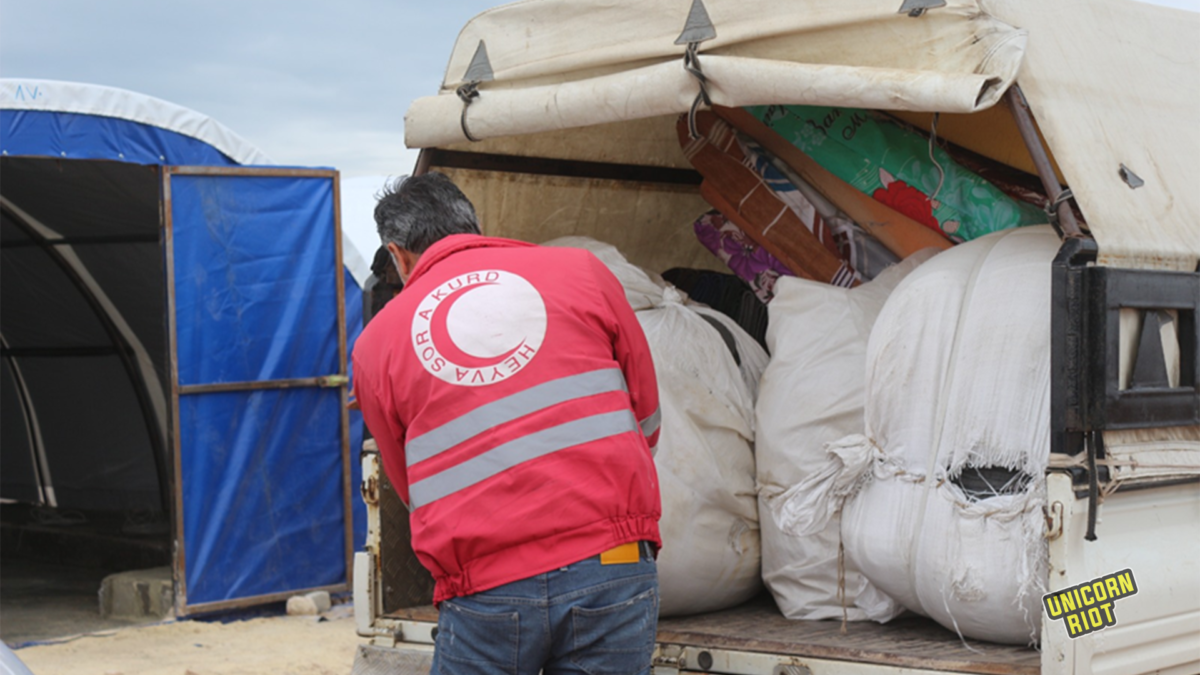
There are five camps in Shahba canton (Sardam, Barxuadan, Afrin, Awdaa, Shahba). In each of the camps, health, education, services and food are drastically undersupplied.
According to the administrators of the camps; Barxuadan camp has 825 tents and 2,771 displaced people, Al-Awdaa camp has 159 tents with 521 displaced people, Shahba camp has 110 tents, 467 displaced people, Sardem camp has 995 tents, 3,734 displaced people, and Afrin camp has 116 tents and 479 displaced people.
The critical situation depicts the need of the region – basic staples are not available which hinder any prospects for sustainable recovery. The entire region is in dire need of medical support, especially in the wake of spreading many diseases: Leishmaniasis comes out at the top, and many cases of anemia have emerged due to the malnutrition. Moreover, medicines for chronic diseases are almost non-existent.
Hospitals and medical centers are under big pressure because they lack the needed equipment. There is a big need for magnetic resonance devices after the increase of cardiology cases.
As mentioned, Al-Shahba has good fertile agricultural land. While there are damaged spaces, there are also intact spaces, but the big shortage of fuel is an obstacle to investing in what they have. However, the psychological side of the population’s war experience is neglected, and people, especially children are under a turbulent psychological state.
Read our comic on the Syrian revolution which focuses on some of the aspects lost and erased from the discussion of the revolution like the local councils, Omar Aziz, and the Douma 4.
Unicorn Riot original reporting on Syria:
- International Volunteers of the Rojava Revolution - DOCUMENTARY FILM - (2019)
- Looking Beyond the Rubble: Aiding the Kurds After the Syria, Türkiye Earthquake (April 25, 2023)
- Revolution in Every Country Comic Series: Episode 1 – Syria: Erasing an Inconvenient Revolution (June 5, 2022)
- Origins of the PKK and the ‘Rojava’ Revolution: Part II (September 18, 2021)
- Origins of the PKK and the ‘Rojava’ Revolution: PT. I (August 3, 2021)
- Building Autonomy Through Ecology in Rojava (February 28, 2018)
- Kurdish Fighters Defend Afrin From Turkish Military Invasion in Northern Syria (January 25, 2018)
- Kobane Rebuilds as ISIL Control Diminishes in Syria (December 27, 2017)
- As Course of War Turns, Turkey Challenges Democratic Federation of Northern Syria (Rojava) (October 30, 2017)
- Solecast #20 Rojava Special w/ Janet Biehl (January 9, 2016)
- Pipeline Politics in the Syrian Civil War (September 20, 2015)
- Youth Press Conference Bombed in Turkey - Deprogram Ep. 12 (July 23, 2015)
Follow us on X (aka Twitter), Facebook, YouTube, Vimeo, Instagram, Mastodon, Threads, BlueSky and Patreon.
Please consider a tax-deductible donation to help sustain our horizontally-organized, non-profit media organization:

